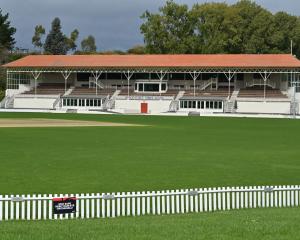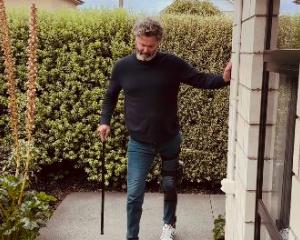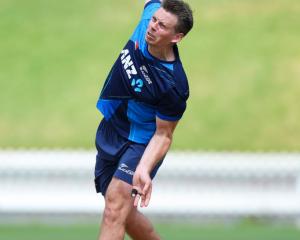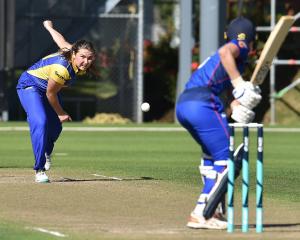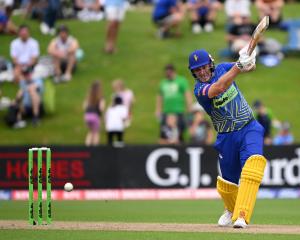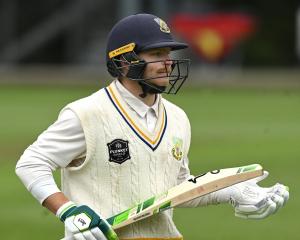One was New Zealand's best leg-spin bowler, the other was an outstanding off-spinning all-rounder who should have played much more for his country.
But, together, the contribution of the Alabaster brothers, Jack and Gren, to Otago cricket was inestimable.
Their careers were remarkable, both for their longevity and their quality.
Jack played his last test series for New Zealand at the age of 41, and he remains this country's oldest test cricketer; Gren made his only New Zealand tour at the age of 40.
That indicates their persistence, their perseverance, their southern stubbornness to make the most of their natural ability.
Jack was the elder by three years.
He bowled his leggies with his sleeves buttoned to the wrist and he was a capable batsman at about No 9 in the order.
Gren, who played in glasses, bustled to the crease to bowl his off-spinners and he was a left-handed batsman with a particular penchant for the sweep.
Both played the game hard, both were fighters to whom lost causes were merely a challenge.
They were both school teachers of distinction and, as such, they were keen students of cricket who played the game with inquiring minds.
They often bowled in tandem for Otago and, between them, they claimed 469 wickets in 134 matches.
Jack played much of his early career for Otago in combination with Alex Moir, and there was the unique sight of two quality leg-spinners teasing the opposition batsmen.
Jack, tall and lean, was the master of accuracy, of line and length, and there were few freebies for the batsmen.
Moir, somewhat rotund, was more generous with deliveries which could be hit but he was a big spinner of the ball and was devastating in helpful conditions.
Jack toured India and Pakistan in 1955-56 without having played for Otago and he took two wickets for four runs - including the crucial scalp of Everton Weekes - when New Zealand gained its first test victory, over the West Indies, at Eden Park later that year.
Not that Jack was always favoured by the selectors.
His omission from the tour of India, Pakistan and England in 1965 was regarded as a monumental blunder, his place going instead to Graham Vivian (18), whose bowling was seldom used.
Gren was even more harshly treated.
His omission from national teams was an indictment of selection policies of the time when New Zealand relied almost entirely on seam bowlers.
He eventually toured Australia in 1973-74 where he played in three first-class matches but did not make the test team.
The high point of Jack's career was the tour of South Africa in 1961-62 where he was regarded as world-class.
He bowled the most overs on tour, took the most wickets (88), claimed 22 wickets in the tests and played a major role in the two wins which enabled New Zealand to square the series.
Jack, who now lives in retirement in Alexandra, recalled the tour as the best of the four he made with New Zealand teams.
"The weather was good.
It was warm, your fingers were supple, and that helped.
Leg-spinning takes a while to develop.
I'd been bowling it for some time so there was a maturity factor.
"South Africans don't play leg-spin bowling that well and other back-of-the-hand spinners who had toured there had done well.
The pitches were fairly even, from venue to venue.
They were firm, so you got a bit of pace off them and they tended to have quite a bit of bounce, which is important for a spinner.
There weren't any recognised leg-spinners in South Africa so they weren't used to playing them."
When New Zealand won the fifth test in Port Elizabeth to level the series, he bowled 78 overs and took four wickets for 159.
"I thought I bowled as well as I ever had in that test," he reflected.
"I had lots of batsmen get edges here and there but it was one of those times when I didn't have any luck."
Jack said there were several factors which contributed to the lack of leg-spinners in New Zealand.
"It's something that takes a long time and a lot of hard work.
It's the most difficult cricket art.
The one-day game has had an influence but New Zealand hasn't wanted to use leg-spinners.
And most captains wouldn't know how to set a field for a leg-spinner."
Few have played test cricket - Alabaster, Moir, Cec Burke, Vivian and Greg Loveridge are the best known - but only Alabaster had an extensive international career.
And that was only because his uncanny accuracy enabled him to be used in the role of a stock bowler.
Jack said he was fortunate his Otago captains, John Reid and Bert Sutcliffe, appreciated what leg-spinners were about and he and Moir were given the opportunity to bowl in tandem.
They also realised that New Zealand batsmen didn't play leg-spin very well - and still don't.
Reid named Alabaster as the only spinner in his all-time New Zealand team, ahead of spinners including Tom Burtt, Hedley Howarth and John Bracewell.
His wrist spin was difficult to read and he was very accurate, which is unusual for a bowler of his type.
Alabaster, bowling as he did in South Africa, was our best spinner since the war.
He had the right temperament, he was a good team man, and he was a very good thinker about the game.
He made his final tour in 1972 to the West Indies (the first by New Zealand to the Caribbean) and, though he played in two tests, he was plagued by lower back and Achilles tendon problems and retired later that year.
The Alabaster brothers were prodigiously successful during Southland's long Hawke Cup tenure in the 1970s, and it was not uncommon for them to take all 10 opposition wickets between them.
Gren, as well as his batting and bowling, was an outstanding captain and led Otago to Plunket Shield triumphs in 1969-70 and 1971-72.
He began his career for Otago as a batsman, scoring 81 and 60 in his second game, and gradually developed his bowling.
He won the Winsor Cup, for the outstanding New Zealand bowler in 1974-75 when he took 34 wickets at 20.11 and in his final season for Otago, at the age of 41, he claimed 30 wickets at 20.20.
But that was far from the end of his contribution to Otago and New Zealand cricket.
He was cricket manager of the Otago team which won the Shell Trophy in the mid-1980s and he brought to the side a meticulous organisation and an environment which brought out the best in all the players.
It was inevitable that his organisational and analytical qualities would be used at national level.
He became a New Zealand selector in the late 1980s and was cricket manager (coach) on New Zealand's tours of Sri Lanka and Australia in 1987.
He later managed the New Zealand team during Glenn Turner's stint as coach in the mid-1990s.
He now lives in retirement in Oxford, Canterbury.
The Alabasters were formidable opponents at any level, from club to international.
They gave every match their best.
They were the thinking cricketers who wore the colours of Southland, Otago and New Zealand with pride and passion.


